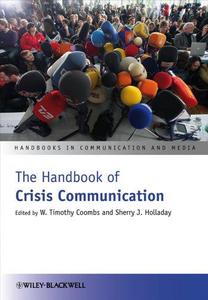 The Handbook of Crisis Communication By
The Handbook of Crisis Communication By2009 | 756 Pages | ISBN: 1405194413 | PDF | 6 MB
Written as a tool for both researchers and communication managers, the Handbook of Crisis Communication is a comprehensive examination of the latest research, methods,and critical issues in crisis communication. Includes in-depth analyses of well-known case studies in crisis communication, from terrorist attacks to Hurricane KatrinaContent: Chapter 1 Parameters for Crisis Communication (pages 17-53): Dr. W. Timothy CoombsChapter 2 Crisis Communication and Its Allied Fields (pages 54-64): Dr. W. Timothy CoombsChapter 3 Crisis Communication Research in Public Relations Journals: Tracking Research Trends over Thirty Years (pages 65-90): Seon?Kyoung An and Dr I?Huei ChengChapter 4 Organizational Networks in Disaster Response: An Examination of the US Government Network's Efforts in Hurricane Katrina (pages 93-114): Gabriel L. AdkinsChapter 5 Regaining Altitude: A Case Analysis of the JetBlue Airways Valentine's Day 2007 Crisis (pages 115-140): Gregory G. EfthimiouChapter 6 The Press as Agent of Cultural Repair: A Textual Analysis of News Coverage of the Virginia Tech Shootings (pages 141-158): Mohamad H. Elmasry and Vidhi ChaudhriChapter 7 Are They Practicing What We Are Preaching? An Investigation of Crisis Communication Strategies in the Media Coverage of Chemical Accidents (pages 159-180): Dr. Sherry J. HolladayChapter 8 Examining the Effects of Mutability and Framing on Perceptions of Human Error and Technical Error Crises: Implications for Situational Crisis Communication Theory (pages 181-204): Dr. W. Timothy Coombs and Dr. Sherry J. HolladayChapter 9 How Do Past Crises Affect Publics' Perceptions of Current Events? An Experiment Testing Corporate Reputation during an Adverse Event (pages 205-220): J. Drew ElliotChapter 10 Crisis Response Effectiveness: Methodological Considerations for Advancement in Empirical Investigation into Response Impact (pages 221-242): Tomasz A. Fediuk, Kristin M. Pace and Isabel C. BoteroChapter 11 "We tell people. It's up to them to be prepared." Public Relations Practices of Local Emergency Managers (pages 245-260): Dr Robert Littlefield, Katherine Rowan, Dr Shari R. Veil, Lorraine Kisselburgh, Kimberly Beauchamp, Kathleen Vidoloff, Marie L. Dick, Theresa Russell?Loretz, Dr Induk Kim, Angelica Ruvarac, Quian Wang, Toni Siriko Hoang, Bonita Neff, Teri Toles?Patkin, Rod Troester, Shama Hyder, Steven Venette and Dr Timothy L. SellnowChapter 12 Thirty Common Basic Elements of Crisis Management Plans: Guidelines for Handling the Acute Stage of "Hard" Emergencies at the Tactical Level (pages 261-281): Alexander G. NikolaevChapter 13 Oil Industry Crisis Communication (pages 285-300): Dr Michelle Maresh and David E. WilliamsChapter 14 Educational Crisis Management Practices Tentatively Embrace the New Media (pages 301-318): Dr Barbara S. GaineyChapter 15 FEMA and the Rhetoric of Redemption: New Directions in Crisis Communication Models for Government Agencies (pages 319-334): Dr Elizabeth Johnson Avery and Dr Ruthann W. LariscyChapter 16 Effective Public Relations in Racially Charged Crises: Not Black or White (pages 335-358): Dr Brooke Fisher LiuChapter 17 Public Relations and Reputation Management in a Crisis Situation: How Denny's Restaurants Reinvigorated the Firm's Corporate Identity (pages 359-377): Dr Ali M. Kanso, Steven R. Levitt and Richard Alan NelsonChapter 18 New Media for Crisis Communication: Opportunities for Technical Translation, Dialogue, and Stakeholder Responses (pages 381-395): Dr Keri K. Stephens and Dr Patty MaloneChapter 19 Organizational and Media Use of Technology during Fraud Crises (pages 396-409): Christopher Caldiero, Dr Maureen Taylor and Lia UngureanuChapter 20 Organizational Use of New Communication Technology in Product Recall Crises (pages 410-421): Dr Maureen TaylorChapter 21 Crisis Communication, Complexity, and the Cartoon Affair: A Case Study (pages 425-448): Finn Frandsen and Dr Winni JohansenChapter 22 Crisis Communication and Terrorist Attacks: Framing a Response to the 2004 Madrid Bombings and 2005 London Bombings (pages 449-466): Maria Jose Canel and Karen SandersChapter 23 Negotiating Global Citizenship: Mattel's 2007 Recall Crisis (pages 467-488): Dr. Patricia A. CurtinChapter 24 Celebrating Expulsions? Crisis Communication in the Swedish Migration Board (pages 489-507): Dr. Orla VigsoChapter 25 Crisis Communicators in Change: From Plans to Improvisations (pages 511-526): Dr. Jesper Falkheimer and Dr. Mats HeideChapter 26 Contingency Theory of Strategic Conflict Management: Directions for the Practice of Crisis Communication from a Decade of Theory Development, Discovery, and Dialogue (pages 527-549): Dr. Augustine Pang, Dr. Yan Jin and Glen T. CameronChapter 27 Crisis?Adaptive Public Information: A Model for Reliability in Chaos (pages 550-567): Dr. Suzanne HorsleyChapter 28 Communicating Before a Crisis: An Exploration of Bolstering, CSR, and Inoculation Practices (pages 568-590): Dr. Shelley Wigley and Michael PfauChapter 29 Who Suffers? The Effect of Injured Party on Attributions of Crisis Responsibility (pages 591-606): Sun?A Park and Dr. Maria E. Len?RiosChapter 30 The Dialectics of Organizational Crisis Management (pages 607-634): Charles Conrad, Jane Stuart Baker, Chris Cudahy and Jennifer WillyardChapter 31 Exploring Crisis from a Receiver Perspective: Understanding Stakeholder Reactions during Crisis Events (pages 635-656): Tomasz A. Fediuk, Dr. W. Timothy Coombs and Isabel C. BoteroChapter 32 Credibility Seeking through an Interorganizational Alliance: Instigating the Fen?Phen Confrontation Crisis (pages 657-674): Dr. Timothy L. Sellnow, Dr. Shari R. Veil and Renae A. StreifelChapter 33 Future Directions of Crisis Communication Research: Emotions in Crisis - The Next Frontier (pages 677-682): Dr. Yan Jin and Dr. Augustine PangChapter 34 Complexity and Crises: A New Paradigm (pages 683-690): Dr. Dawn R. Gilpin and Dr. Priscilla MurphyChapter 35 Considering the Future of Crisis Communication Research: Understanding the Opportunities Inherent to Crisis Events through the Discourse of Renewal (pages 691-697): Robert R. Ulmer, Dr. Timothy L. Sellnow and Matthew W. SeegerChapter 36 Toward a Holistic Organizational Approach to Understanding Crisis (pages 698-704): Dr. Maureen TaylorChapter 37 What is a Public Relations "Crisis?" Refocusing Crisis Research (pages 705-712): Michael L. KentChapter 38 Crisis and Learning (pages 713-718): Dr. Larsake LarssonChapter 39 Pursuing Evidence?Based Crisis Communication (pages 719-725): Dr. W. Timothy Coombs
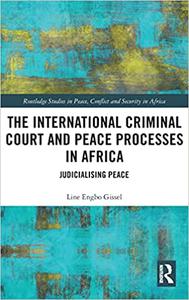


![S.T.A.L.K.E.R. 2 / STALKER 2: Heart of Chornobyl - Ultimate Edition (2024) [+UPDATE 23.12.2024 - v1.1.3] ElAmigos / Polska wersja językowa](https://i.postimg.cc/Zqd8RWGY/UZG8PBE.jpg)



































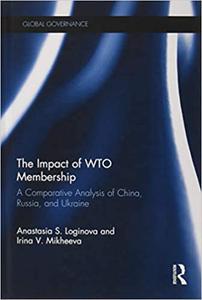
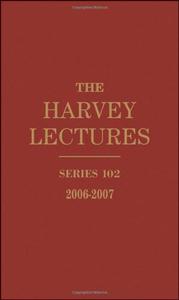
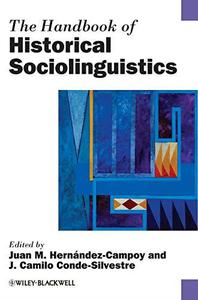

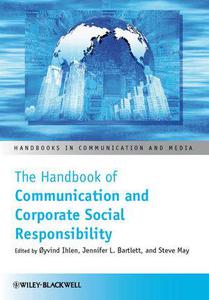
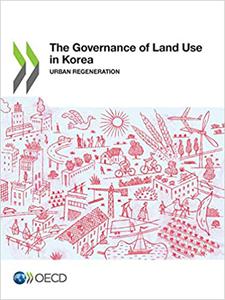










![David Gilmour - Luck and Strange (2024) [FLAC]](https://i.imgur.com/everaBc.jpeg)
![Męskie Granie Orkiestra - Męskie Granie 2024 (2024) [FLAC]](https://i.imgur.com/FAyOxrM.jpeg)
![The Rolling Stones - Hackney Diamonds (2023) [FLAC]](https://i.imgur.com/wCkyyUN.jpg)
![Lady Gaga - Harlequin (2024) [FLAC]](https://i.imgur.com/dcgIA8D.jpeg)
![Natalia Kukulska - Dobrostan (2024) [FLAC]](https://i.imgur.com/bdljG3O.jpeg)
![Kaśka Sochacka - Ta druga (2024) [FLAC]](https://i.imgur.com/hORQKvn.jpeg)
![Kuba Sienkiewicz - Pani Bóg (2024) [FLAC]](https://i.imgur.com/qijCx8Z.jpeg)
![Lanberry - Heca (2024) [FLAC]](https://i.imgur.com/8P7QfeR.jpeg)
![Sara James - PLAYHOUSE (2024) [FLAC]](https://i.imgur.com/m4f8OKg.jpeg)
![Grzegorz Hyży - EPILOG (2024) [FLAC]](https://i.imgur.com/8DA2sBr.jpeg)
![Myslovitz - WIECZORAMI CHŁOPCY WYCHODZĄ NA ULICE (2024) [FLAC]](https://i.imgur.com/l9mMtIG.jpeg)
![Krzysztof Zalewski - ZGŁOWY (2024) [FLAC]](https://i.imgur.com/vh48RAc.jpeg)
![Krzysztof Cugowski - Wiek to tylko liczba (2024) [FLAC]](https://i.imgur.com/SBzgqe2.jpeg)
![Nosowska - Kasia i Błażej (2024) [FLAC]](https://i.imgur.com/mObvVXQ.jpeg)
![sanah - Pianinkowe Kaprysy (2024) [FLAC]](https://i.imgur.com/pVjjPAa.jpeg)
![Kwiat Jabłoni - Pokaz slajdów (2023) [FLAC]](https://i.imgur.com/diERHfZ.jpg)
![Robert Cichy - Spacer po Warszawie (2024) [FLAC]](https://i.imgur.com/ixleU9o.jpeg)
![Viki Gabor - Terminal 3 (2024) [FLAC]](https://i.imgur.com/Q1KCnDs.jpeg)
![Sanah - Kaprysy (2024) [FLAC]](https://i.imgur.com/71OZm4h.jpeg)
![Męskie Granie Orkiestra - Męskie Granie 2023 (2023) [FLAC]](https://i.imgur.com/U4YHo8d.jpg)




